#Pyractomena
Text
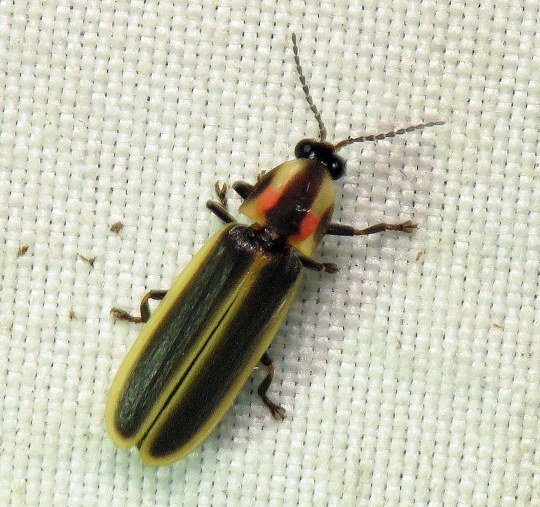
Bug of the Day
This neatly-colored firefly appears to be Pyractomena sp., not a genus I see too often. I did not get to see it light up but it was still pretty cool.
227 notes
·
View notes
Photo


Spring Tree-Top Flasher
Photos taken in Millersville, MD
04/13/2022
Photography by Nisha Wolfe
#Spring Tree-Top Flasher#Pyractomena borealis#insect#Photography#My Photography#Millersville#Maryland#MD#04/13/2022
2 notes
·
View notes
Text



Firefly I’ve been raising is all grown up!!
#spw talks#Pyractomena borealis#firefly#beetle#HES SO CUTE…#I’m seeing if he’ll like sugar water or beetle jelly before I try out live prey with him#bug#pet pics
1 note
·
View note
Text
Photuris is a genus of fireflies (beetles of the family Lampyridae). These are the femme fatale lightning bugs of North America. This common name refers to a behavior of the adult females of these predatory beetles; they engage in aggressive mimicry, imitating the light signals of other firefly species' females to attract, kill, and eat the males. Their flashing bioluminescent signals seem to have evolved independently and eventually adapted to those of their prey, mainly unrelated Lampyrinae, such as Photinus (rover fireflies) or Pyractomena.[1]
10 notes
·
View notes
Text
TW: Mentions and imagery of bugs/insects
You know how moths are attracted by light? And fire flies produce their own light?
Moth!Izuku:
A lonely Luna moth that has been flying around alone until he sees some flashing lights around him, but one stands out as the brightest he has ever seen.

Firefly!Katsuki:
A Pyractomena firefly that flashes a yellow-amber light similar to the sparks of a campfire, but unlike the other males from his group that are attracting mates, Katsuki hasn't gotten the same luck, might be because his light is the only one with his color, so he's the odd one out and undesired by other members of the species, until he sees a huge pair of wings that seem to reflect the glow of the moon, thus, he and Izuku meet.

Izuku tells Kacchan he loves his light and the blonde says the same about his wings, the two go to a lower part of the patch of grass where the fireflies are and the two become mates, they live in a small home in a tree stump and have adopted a number of orphaned baby bugs they found around their territory.
8 notes
·
View notes
Text


The spring treetop flasher, Pyractomena borealis, has begun to pupate! Soon the evening trees will be alive with light! On the left you can see this lightning beetle's larval form and on the right you can see the last larval shed, encasing the developing pupa.
0 notes
Photo
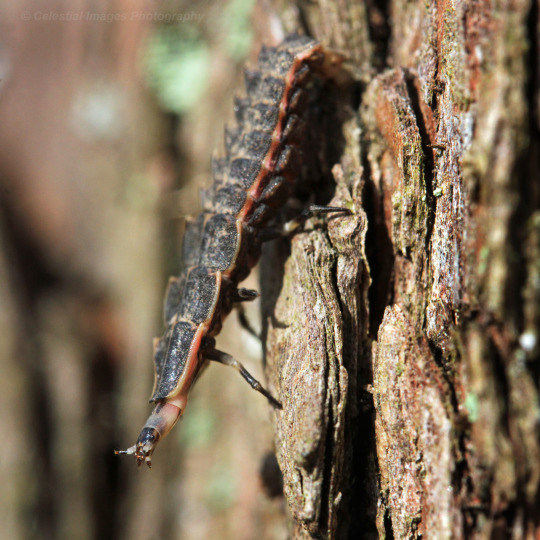

This prehistoric looking thing is a baby firefly (aka lightning bug)
Firefly beetle larva (Pyractomena sp.) on bald cypress
March 9, 2021
Southeastern Pennsylvania
#not a fly or true bug#bug#bugs#photographers on tumblr#beetle#beetles#firefly#lightning bug#Pyractomena#entomology#bugblr#Coleoptera
156 notes
·
View notes
Text
@oakflamee submitted: I've never submitted anything before so I hope I did this right! I saw this little beetle while on my walk, do you think you can identify it? I Iive in the southern united states, near the alabama, georgia, mississippi area.

(also sorry for the low quality I didn't have long to take the photo!)
Yes you did it right :) This lil friend is a firefly beetle, likely Pyractomena borealis.
35 notes
·
View notes
Text
Fourth of July and the Firefly

Although many fireworks shows are cancelled this Fourth of July, this is a great opportunity to get out over the holiday weekend and enjoy nature’s very own light show during World Firefly Day, on July 4th and 5th!
Fireflies, AKA lightning bugs, are neither flies nor bugs. They are actually a type of beetle with soft wings and the ability to bioluminesce (light up).
There’s a good chance you will see (or have already started seeing) firefly light displays this summer. There are six genera of fireflies that you are likely to encounter in Pennsylvania. Three are diurnal and don’t light up as adults (Ellychnia, Pyropyga, and Lucidota). Their light organs are absent or reduced in the adult stage. The remaining three genera are nocturnal and use light displays as adults. One is Pyractomena, which is a spring-active firefly that has already finished displaying for the year. That leaves Photinus and Photuris as the hosts of nature’s fireworks this Fourth of July. If you pay close attention to the flash patterns you’re seeing in your yard or get a chance to see one up close, you’ll probably be able to tell which one it is!
Photinus fireflies (top) are flattened in appearance and their heads are usually concealed from above, whereas Photuris fireflies (bottom) are hump-backed and you can often see their heads from above.


Creative Commons © David Cappaert, Bugwood.org
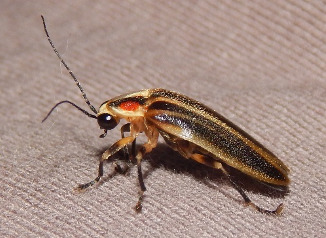
Photo credit: Andrea Kautz
Flash patterns vary by species, as do the timing and location of the display. Some species display low to the ground, while others display high in trees. Some are active at dusk, and others after dark. The most common firefly in the eastern U.S. is Photinus pyralis which has a lazy J-shaped flash pattern. Other flash patterns you may have seen are single or multiple rapid blinks. The displays you see are male fireflies advertising to females, who respond inconspicuously with their own flash pattern from a lower perched position. Some “femme fatales” in the genus Photuris will actually hunt by flashing in response to males of other species to lure them in, and then eat them!
Speaking of hunting, firefly larvae (below) are predators that live in moist soils, feeding on slugs and snails, which is a great method of pest control! Adults of some species are predators, but others drink nectar from flowers or simply do not eat at all.

Creative Commons © 2019 Ken Childs
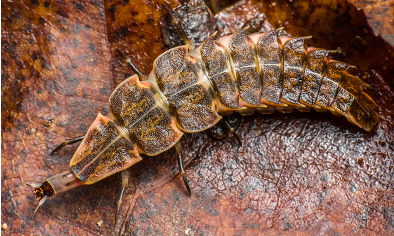
Creative Commons © 2012 Derek Hauffe
The light-producing behavior has its origins in the larvae, which use the glow as a warning to predators that they are toxic. Other animals use bright colors to achieve this, but this wouldn’t be effective for nocturnal species in darkness. Adult fireflies light up to warn predators, but also to communicate with members of their own species, specifically potential mates. The distress signal is different from the mating signal, which you may notice if you capture a firefly in your hand and it starts to blink repeatedly.
We hope you get a chance to celebrate both the Fourth of July and World Firefly Day this year by witnessing some natural firework displays in your own back yard! We encourage you to share your experiences on the Fireflyers International Network Facebook page.
Andrea Kautz is a Research Entomologist at Carnegie Museum of Natural History’s Powdermill Nature Reserve. Museum employees are encouraged to blog about their unique experiences and knowledge gained from working at the museum.
#Carnegie Museum of Natural History#Firefly#World Firefly Day#Bugs#Lightning bugs#Beetles#bioluminescence
23 notes
·
View notes
Photo

Bug of the Day
A firefly (Pyractomena sp.) at the UV light last week. I love the salmon-colored markings on the pronotum.
Thanks to v. below at bugguide.net for the id!
211 notes
·
View notes
Photo

The Occurrence and Behaviors of North American Fireflies (Coleoptera: Lampyridae) on Milkweed, Asclepias syriaca L.
Lynn Faust and Hugh Faust
At four sites spanning a general triangle with 50–100 km legs in East Tennessee over a six-week period in July and August 2013, 56 fireflies, male and female, from four species and three genera were associated with common milkweed, Asclepias syriaca L. Photinus pyralis (L.), Photinus cooki Green, Pyropyga minuta LeConte, and an determined species of Photuris Dejean repeatedly exhibited seven common behaviors of nectaring from individual blooms and stigmatic slits and actively mouthing floral stems, recurved sepals, and uppermost leaves, lasting from 9–175 minutes.
Milkweed pollinia were noted on three of the four species. Maximum firefly presence was observed the first two survey days, 7 and 8 July, falling to low but persistent numbers the remainder of the survey. These firefly behaviors were observed primarily in the four hours before sunset and after sunrise.
Twelve Photuris larvae were observed feeding on milkweed rhizomes in captivity. Reports of milkweed-firefly associations involving at least four additional firefly species in two additional genera, Lucidota atra (Olivier), Photinus indictus (LeConte), Pyropyga decipiens (Harris) and a species of Pyractomena Melsheimer spanning 90 years across the eastern US are presented along with recent reports of similar behaviors witnessed from Texas to Canada.
via: https://bioone.org/journals/The-Coleopterists-Bulletin/volume-68/issue-2/0010-065X-68.2.283/The-Occurrence-and-Behaviors-of-North-American-Fireflies-Coleoptera/10.1649/0010-065X-68.2.283.short?fbclid=IwAR0YlEE1D9BKwl7zG9p_bpSlYcigf8p84btPGVKQAdArxue1dGawUAJJGj0
#entomology#insect#pollinators#beetle#firefly#nature#ecology#science#north america#plants#botany#milkweed#flowers#wildflowers
10 notes
·
View notes
Photo

Spring Tree-Top Flasher
Photo taken in Millersville, MD
04/21/2022
Photography by Nisha Wolfe
#Spring Tree-Top Flasher#Pyractomena borealis#Photography#My Photography#insect#Millersville#Maryland#MD#04/20/2022
0 notes
Text
Photuris (genus)

Photuris is a sort of fireflies (insects of the family Lampyridae) wherein are the femme fatale fireflies of North America. This normal name alludes to the way that the females of these ruthless insects emulate the light signals of other firefly species' guys, to pull in, murder, and eat them. Their glimmering "lightning bug" signals appear to have developed freely and in the end adjusted to those of their prey, predominantly inconsequential Lampyrinae like Photinus (wanderer fireflies) or Pyractomena.
1 note
·
View note
Photo

There are at least two different species of fireflies in Fowl Meadow. The green flashing Photuris and the fainter orange Pyractomena. (at Blue Hills Reservation) https://www.instagram.com/p/CBkACarFQLY/?igshid=hf07gdbq9ohd
0 notes
Photo
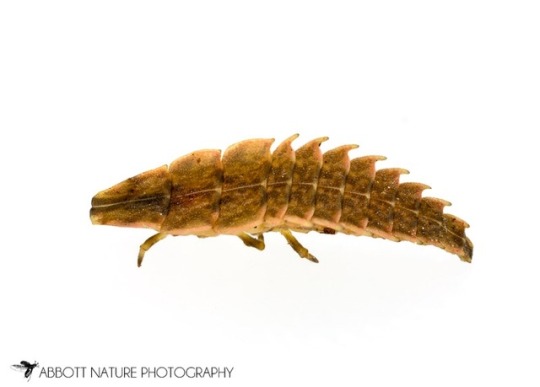
I get a LOT of questions of pictures like this saying “what the heck is this??” These do look like wild aliens but they are harmless firefly babies (Pyractomena sp.)! They are actually quite beneficial and are know to eat things like snails that attack garden!
0 notes
Text
Scientists worry that shrinking national monuments will hurt their research
New Post has been published on https://nexcraft.co/scientists-worry-that-shrinking-national-monuments-will-hurt-their-research/
Scientists worry that shrinking national monuments will hurt their research
The Society of Vertebrate Paleontology is suing to defend Grand Staircase-Escalante and Bears Ears National Monuments in Utah. They’re trying to protect more than 400 archaeology sites, where scientists have found thousands of important fossils—including Diabloceratops, one of the oldest known triceratops and David Polly’s personal favorite. When Polly became the president of the Society of Vertebrate Paleontology, he never expected that filing lawsuits would be part of the gig.
“We’re primarily a scientific organization,” he says. “We have a scientific conference, we have a scientific journal. But part of our organization’s mission is developing policies and best practices and advocating for vertebrate fossils.”
On December 4, the Trump administration announced that they intend to reduce Bear’s Ears to about 15 percent of the 1.5 million acres designated by President Obama last year. The executive branch will also shrink Grand Staircase Escalante National Monument to about half its current size, which was put in place by Bill Clinton in 1996. Polly says that the changes to the national monuments in southern Utah affect at least ten percent of his whole organization, about 2,200 scientists.
Scientists worry that private enterprises such as mineral excavation and drilling will disturb the fossils and wildlife at the monuments, and that this presidential action will lead to funding cuts that will limit both research and science communication. Popular Science spoke to three scientists about their research—and their concerns about how cuts to Bear’s Ears and Grand Staircase will affect it.
Allison Stegner
Allison Stegner, a researcher at the University of Wisconsin-Madison, studies packrat middens in the Bear’s Ears national monument. That might sound cute, but the research involves anything but fuzzy rodent gloves. These small mammals collect carnivore bones, coyote poop, and the regurgitations of raptors and owls. “It’s really charming,” says Stegner.
Because packrats are so picky about the rocky hovels where they spend their lives, a single family can occupy the same space for thousands of years. This makes them ideal archaeological assistants. “If you were to dig a hole through the sand you would find ancient, buried levels of the packrat nest,” says Stegner. By exploring these layers, she learns about how different species—plants, animals, long-gone mollusks, and even a juvenile parrot—have responded to past environmental changes. With this data, she makes hypotheses about how Utah’s native species will respond to future climate change. She has found that small mammal populations remained pretty much stable over 5,000 years. But that all started to change over the last couple centuries. Lately, species have been disappearing.
In addition to her packrat work, Stegner surveys fossils across the monument. She has found the bones of a phytosaur, an extinct crocodile with a long snout and extensive body armor. She’s also tracked down some Permian fossils that help paleontologist piece together how different species moved from the water to the land over the course of their evolution.
Stegner says that oil and gas mining pose a threat to the rare fossil beds in Bear’s Ears, which shed light on how different species once interacted. “I have no problem with multi-use land in any way, but I do have a problem with giving over this incredible place, that is so important culturally and scientifically, to [serve] the interests of a few people,” she says.
Seth Bybee
Seth Bybee, life sciences professor at Brigham Young University, started hearing reports of fireflies in Utah in 2012. He wanted to investigate the diversity of local firefly populations. He started to collect fireflies in the state, but realized that the research was going to be slow going. Then, he had the idea of harnessing the power of the masses. With the help of Christie Bills, then a collections manager at the Natural History Museum of Utah, he set up a website where citizen scientists could report their firefly observations. Their project took off. “We think we’ve discovered three new species, though we have to do a lot of leg work to make sure,” he says. “We’re pretty excited about that.”
Western fireflies are the party insects of the Pyractomena world. They tend to come out earlier and stay out later than their eastern counterparts, which makes them easier to spot. Volunteers can submit their sightings with a timestamp and habitat information. Undergrads or trained citizen scientists venture out to check the site, which the researchers then load onto a map of fireflies in Utah.
Bybee says that convincing people to submit data was easy. “Turns out Utahns love fireflies,” he says. “It was not a hard sell to get people to participate.” And the project is a popular public service to people who want a luminescent camping experience. Bybee says he gets as many requests for information on where the fireflies are as submissions with new sightings.
Many of the firefly sightings lie with the national monument. Bybee says he doesn’t know how the shrinking public lands will affect his research, or the firefly populations. He anticipates some early conveniences. “It might actually make it easier on us because we don’t have to get as many permits,” he says. But he worries about how the changes will affect his research over time. “We might lose the possibility to get down there and look at these things in untarnished habitats,” he says.
Robert Gay
When Robert Gay was an undergraduate studying paleontology, his research cleared a dinosaur species of cannibalism charges. Other scientists thought that Coelophysis, a bird-like dinosaur, ate its young because they found some bones inside the Coelophysis rib cage. But Gay disproved this theory. “My work showed that the animals had been underneath, not inside, the animals,” he says. “And some of the bones would not have been able to fit down the esophagus.”
Now Gay looks for fossils in Bear’s Ears. He knows exactly what will happen if the monument status is taken away. He’s already lived that scenario. Barack Obama only designated the monument in December 2016. While Gay was working in Bear’s Ears before the change, one of the sites was looted. The skull of a crocodile mimic called a Pravasuchus was returned to staff at the petrified forests of Arizona. The researchers there published an abstract announcing they had the fossilized head right as Gay and his research team discovered the rest of the body. It fit perfectly.
When the site became a national monument, extra law enforcement were assigned to protect archaeological sites. Now, Gay says he is concerned that funding will be cut and his dig, right off the highway, will become a beacon for fossil thieves. “It becomes harder to do the work,” he says. He was also hoping that the area could someday be turned into a dinosaur park display, because of the diversity of species in the area. Visitors might be able to imagine Utah as the Jurassic (or Triassic) Park it once was, with many species of dinosaurs and mammals interacting. Tax dollars fund scientific research, after all, and U.S. citizens deserve to get their money’s worth. Now, he says that dream is a long shot, and people are less likely to view—and be amazed by—the megafauna that once ruled the region. “The public may never get to see this site,” he says.
Written By Ellen Airhart
0 notes